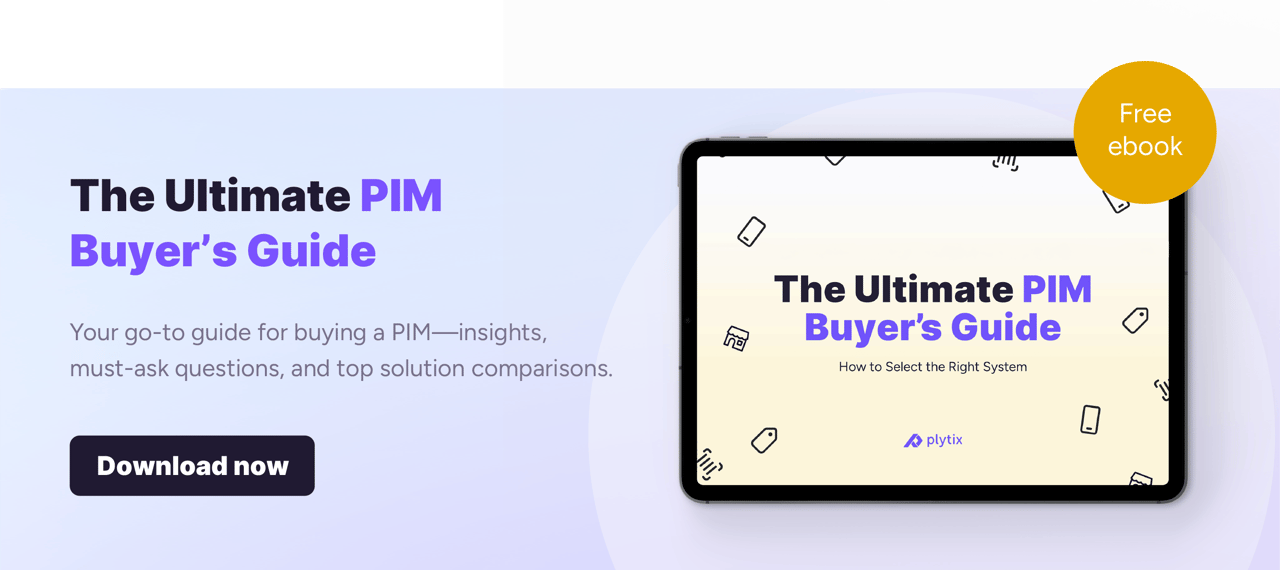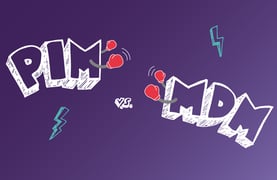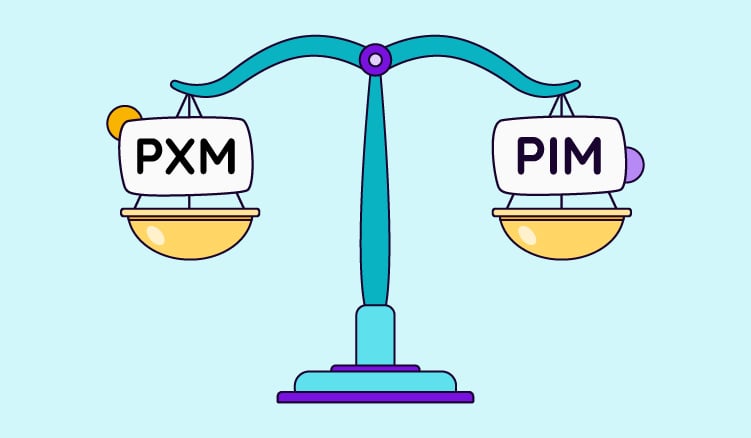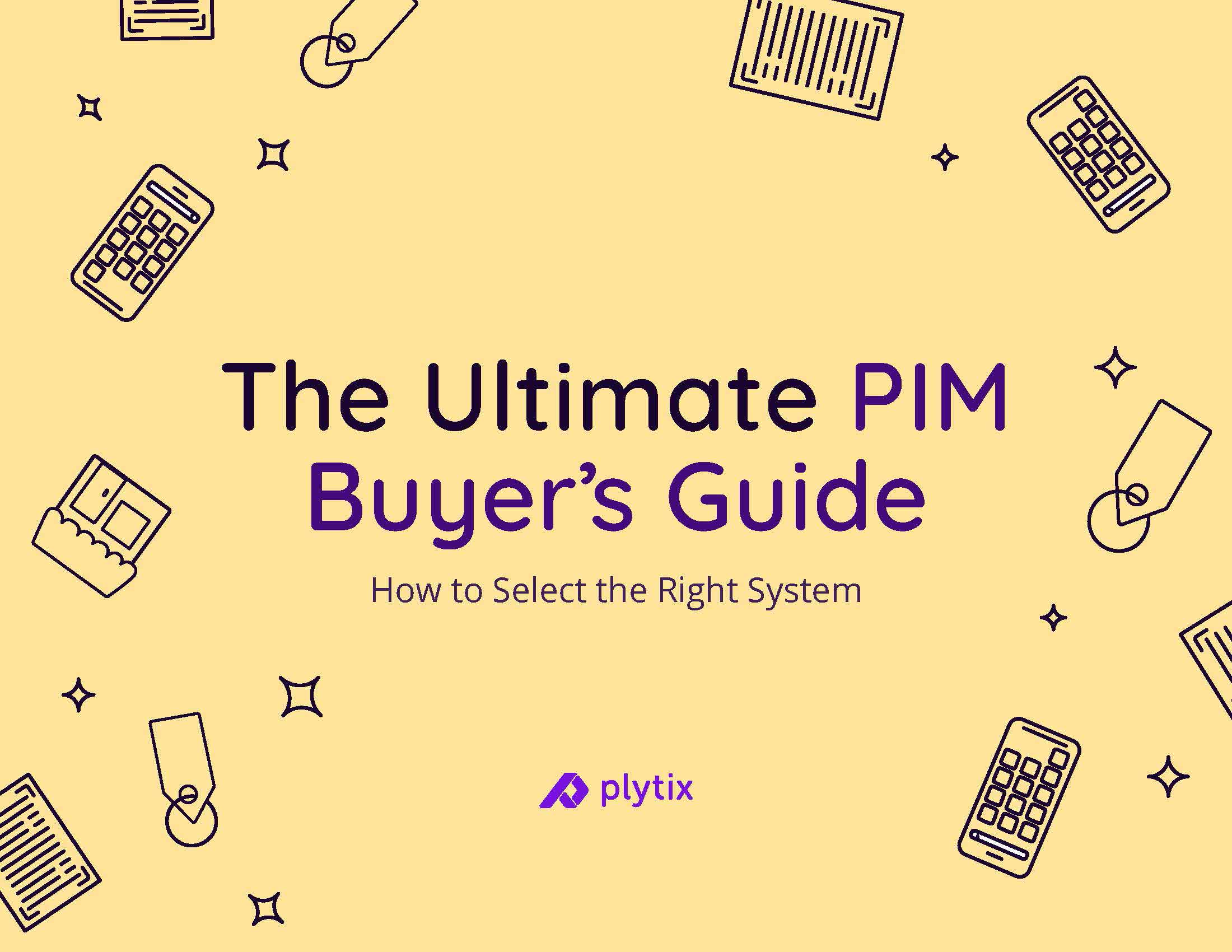More than ever before, we are awash in a sea of data.
In fact, IDC predicts that our digital universe will double in size every two years.
Digital brands and retailers need to have the right systems in place to collect, organize, and leverage all their valuable consumer and product data.
Today, we’re going to talk about two such systems, which are designed to help your business understand and control the contexts in which your data is organized: Master Data Management (MDM) and Product Information Management (PIM).
The one you ultimately choose should do one thing, and do it well: Get your data into the right context so your team can control it and put it to good use.
Without further ado, let’s explore the definitions of, the key differences between, and the best use cases for MDM and PIM so that you can make an educated decision about which data management tool will keep you afloat in the coming flood of data. Read on—or you can go for the video option instead, no judgment here.
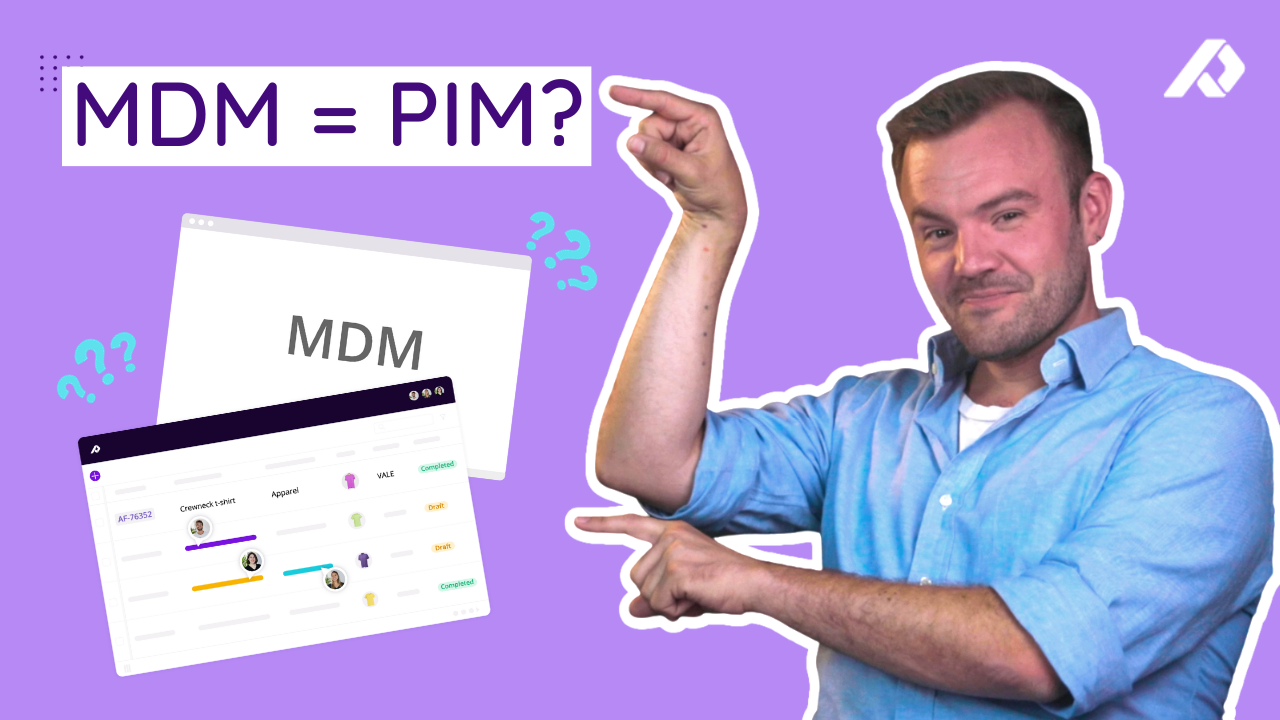
What are MDM and PIM?
Here’s a quick definition for both MDM and PIM:
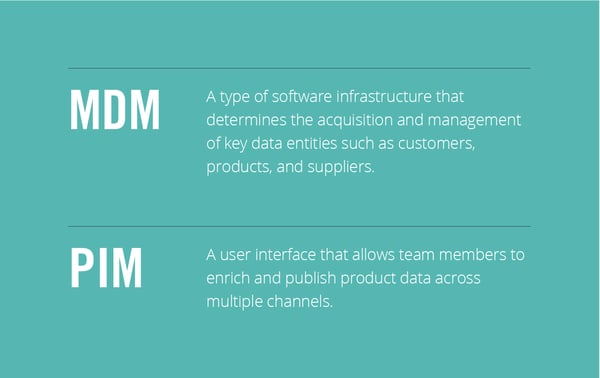
To be clear, PIM is (or should we say, can be, but doesn’t have to be) part of MDM.
A significant number of companies opt for a standalone PIM solution as it can often be a better, faster option when it comes to pushing out product descriptions across multiple channels.
Let’s get into the differences between MDM and PIM. That’s where the rubber meets the road in terms of the business decision you’ll need to make as you’re considering each system.
The Difference between MDM and PIM
Every business maintains high-value information that sits at the nucleus of virtually all decisions and transactions.
An MDM system handles all of that data.
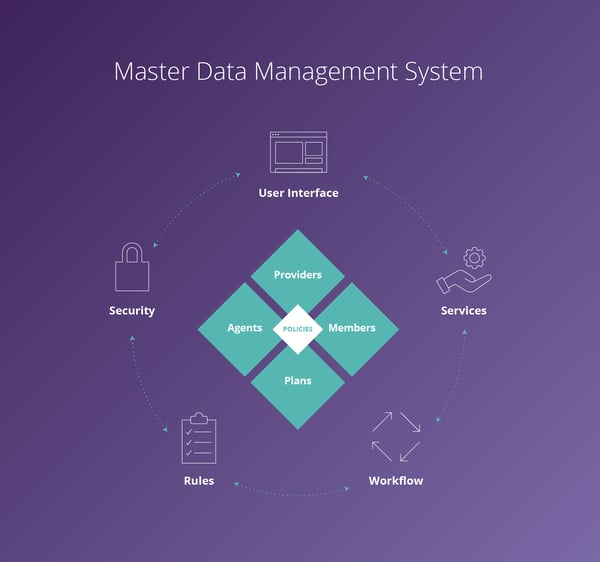
Over time, as the volume of data builds, it gets more challenging for the business to sustain its quality. This can have major negative consequences for key business processes that rely on that data to be accurate and complete. Master Data Management (MDM) has a singular focus on giving businesses a single, trusted source for back-end data that undergirds the efficacy of the enterprise.
An example of a use case for MDM: A call center employee is searching a database for information about a customer’s previous interactions with the company. That customer has various attributes that the employee should be able to identify and search for within an existing registry of known individuals that interacted with the company previously.
As you can see, having valid and reliable information within the registry (using an MDM) becomes critical for business success in this instance.
A Product Information Management (PIM) system centrally manages product information while also enabling users to pursue an omnichannel marketing strategy with consistent, quality content. In short, a PIM is a marketing solution that helps business integrate across channels, collect relevant data, and better reach consumers with their content.
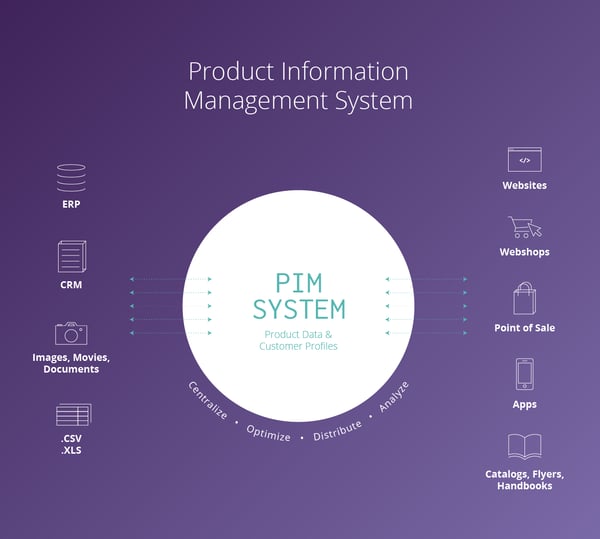
An example of a use case for a PIM: Organizing product photos into a cohesive narrative about a product, showing the product in use and diagramming its specific parts. In this case, a PIM shows the relationship between the product and the image while also placing them into a format that allows for publishing across multiple ecommerce channels.
While it’s easy to think of the decision between an MDM or a PIM as an “either, or” question, it’s important to understand that the two systems can often augment each other. As a company grows, it may even make sense to include both systems and the solutions they offer.
Now that you understand what PIM and MDM are and are not, it’s time to take a good hard look at your current needs as a business to determine which is the better fit.
Which is Right for My Business?
Decisions, decisions.
While it may be clear cut whether PIM or MDM is better in some cases, we can’t all be that lucky. That’s why we developed the following guide to walk you through key questions that will help you make the right decision. It’s structured to move you from the broader strategic business questions through the nitty-gritty questions about how you’ll actually leverage whichever system you choose.
Key Questions When Considering MDM vs. PIM
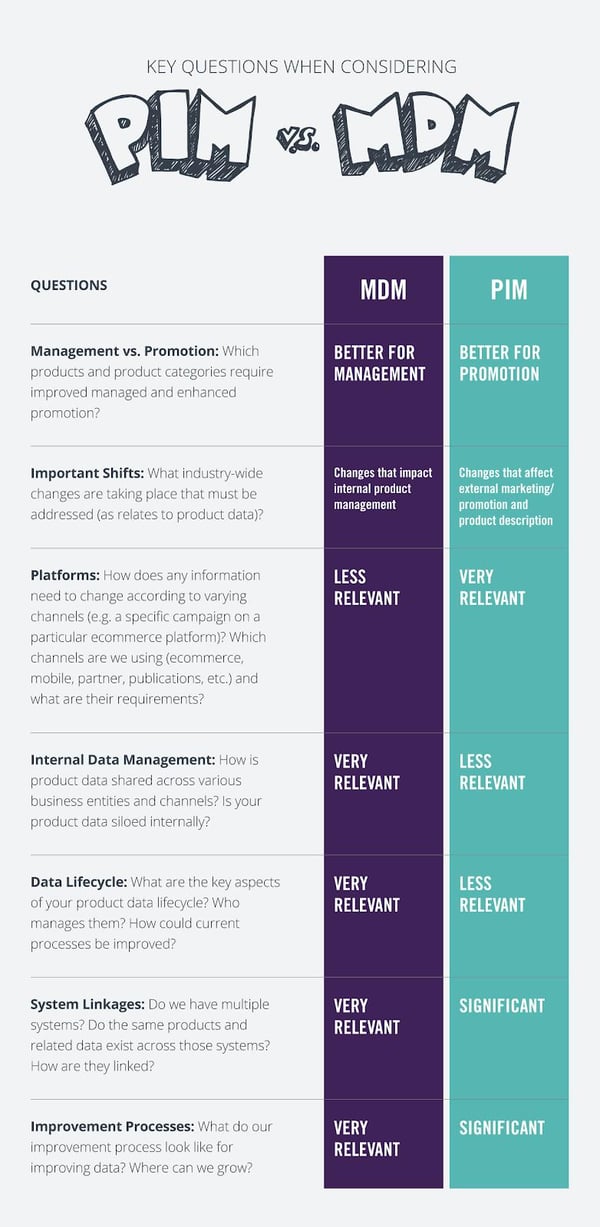
Once you’ve worked through these questions, the next step is to more deeply consider your goals. They can and should differ depending on your choice of MDM versus PIM.
Choose an MDM if Your Goals Are...
Looking for back-end operational excellence? Then it might be time to consider an MDM.
If your goals resemble the following, then you’re on the right track:
- Pull together all of the business elements that allow your business to run, from the data itself to the rules that govern it.
- Refine your master data to develop the most accurate and current version of the information from multiple sources.
- Empower your business to manage the content of the data itself along with the relationships existing within the master data.
- Complete the above for all master data within the business.
Go With PIM if You Wish to Achieve...
Seeking quality product content for omnichannel marketing? It’s time for a PIM.
Some of your goals in this case might be as follows:
- Organize and refine product data (documents, images, product descriptions, etc.).
- Integrate marketing data with product data to create a unified whole.
- Empower the marketing team to maintain product data within an optimal workflow.
- Connect commerce, experience management, and product management into a seamless business process.
Here, the focus is on the product data and how it’s being manipulated while also aligning to specific requirements for the data such as syndication and other conditions.
Which Platform is Right for You?
Remember that these two systems are often complementary and understanding each in a deep way will help you determine whether MDM or PIM is ideal for your company at this time. Taking the time to clarify your specific business goals will help you determine which solution is right for you at this point in your business lifecycle.
Good luck choosing between these two great (but fairly different) systems! If you’d like a more in-depth take on PIMs, check out our buyer’s guide right here ⬇️